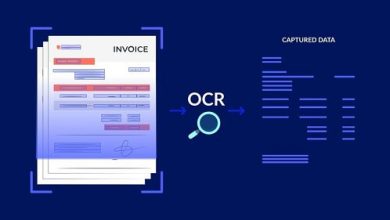How does alternative data help financial institutions?
Our lives have changed significantly with the development of technology and the internet. We have access to numerous things and activities that might’ve been unimaginable just decades ago. Not only can we use various messenger apps to communicate with each other, but we can also use them to see our loved ones living in different cities, countries, and even continents. Can you imagine relying on the post to get the news of your loved one living far away? According to the CBS News survey, a large number of the surveyed people have not sent or received a handwritten letter within the mail in over five years. It is no surprise, considering that with messenger and social media apps, you can get a response to your message in a matter of seconds instead of waiting for weeks. And the benefits of technological development just keep coming.
The financial industry has also experienced the benefits of technological advancements, making lives easier for people and businesses dealing with financial matters. With the digital transformation, the financial industry has become less restrictive and more open to the ones using its services. It has allowed financial institutions better access to users and their data while creating new opportunities, such as digital banks, mobile wallets, and new online currencies. While the standard data financial institutions use in their daily operations is important, SEON’s guide on alternative credit scoring shows why the use of alternative data makes all the difference.
Role of financial institutions in the modern world
Financial institutions facilitate day-to-day living for people worldwide, and with the development of online banking, this has never been more true. According to the World Bank, more than 1.6 billion individuals are unbanked due to the inclusivity of traditional banking procedures. That means that they have no bank accounts and no access to other financial products such as loans, mortgages, or even insurance. This can impact people’s lives in more ways than just one, as not only does it prevent them from investing in their future, but it leaves them more vulnerable if they experience unexpected financial situations.
Financial institutions are also losing with this, as that is a loss of 1.6 billion potential clients. Allowing them to become account holders can open more opportunities for them and the banks, as they will be more inclined to use other financial services. This will all remain the same with traditional banking and risk scoring. This is where the use of alternative data comes in handy.
How does alternative data help?
In traditional banking methods, financial institutions take the data provided to decide whether they will offer their services or the person will be refused. The decision is usually made by examining individuals’ credit history, such as their income, credit card usage, debt trail, or utility bill payments. While this works for some individuals, there are still many people who will not have a credit history that these terms can score. They are immediately considered a high credit risk, while the better term would be an unknown credit risk. For example, many people live in a shared household and do not pay utility bills. With the traditional banking methods, they would be considered a bigger risk, while in fact, they could be a perfect candidate if alternative data is taken into consideration.
By enriching these historical financial data with information from non-traditional data sources, financial institutions can get a clearer picture of the applicants and their trustworthiness. This will help financial institutions provide their services to individuals who might’ve been refused when using only traditional risk scoring methods and prevent fraudulent attempts from individuals who would’ve been approved. By assessing users’ digital footprint, you will be able to gather more information about the user that can be used for risk scoring, especially when traditional data are unavailable or unsatisfactory. With the growing online presence of individuals and banks, digital footprints can provide more data than ever. From their social media presence or the age of their email address to even what online subscription they use, all of these data can help determine their risk factor.
The world is constantly changing; online banks are becoming more present than ever, new currencies are created, and more and more people are gaining access to these services. With the competition getting stronger, financial institutions must take all necessary steps to provide the best service possible while protecting themselves.





